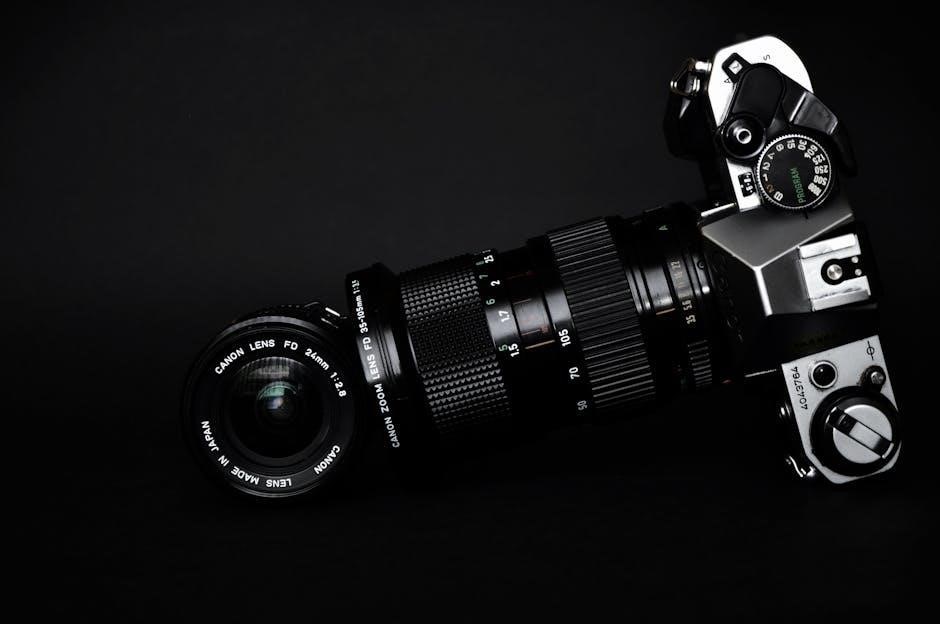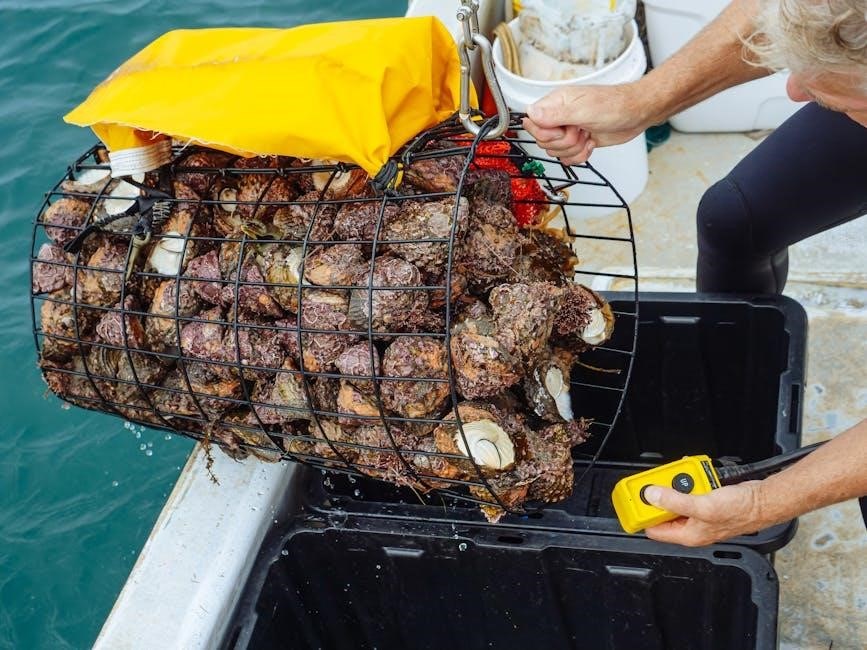Welcome to the comprehensive guide for the Dixell Controller. This manual provides essential information for installing, operating, and customizing your Dixell digital controller effectively, ensuring optimal performance in various applications.

1.1 Overview of the Dixell Controller
The Dixell controller is a microprocessor-based system designed to regulate temperature and defrost functions in refrigeration and heating applications. It offers advanced features like twin evaporator control, hot key programming, and ModBus RTU connectivity. Models such as the XR10C, XR60CX, and XR20C cater to diverse needs, ensuring precise monitoring and control; This device is widely used in commercial refrigeration, providing reliable performance and customization options for optimal operation.
1.2 Importance of the Manual for Users
This manual is crucial for users to maximize the Dixell controller’s potential. It provides detailed instructions for installation, configuration, and troubleshooting, ensuring safe and efficient operation. By following the guide, users can customize settings, understand alarm signals, and maintain the controller properly. The manual also serves as a quick reference, helping users resolve issues and optimize performance, making it an indispensable resource for both new and experienced operators of the Dixell system.

Key Features of the Dixell Controller
The Dixell controller offers advanced features such as probe calibration, defrost management, twin evaporator control, and Hot Key programming for enhanced functionality and user convenience.
2.1 Probe Calibration Options
The Dixell controller offers precise probe calibration options, allowing users to adjust offsets for both the first and second probes. This ensures accurate temperature readings and optimal performance. Calibration ranges from -9.99°C to 9.99°C, enabling fine-tuning for specific applications. Proper calibration is essential for maintaining temperature control and preventing errors in defrost cycles or other operations. Refer to the manual for step-by-step calibration instructions to ensure your system operates efficiently and accurately.
2.2 Defrost Control and Management
The Dixell controller features advanced defrost control options, ensuring efficient management of defrost cycles. For twin evaporators, the 4th (AUX) relay and probe 3 (Pb3) regulate the second evaporator’s defrost. Defrost terminates independently for each evaporator, resuming refrigeration only when both are complete. This system prevents unnecessary energy use and maintains optimal temperature levels. Customizable parameters allow users to tailor defrost settings to their specific needs, enhancing performance and reliability in various applications.
2.3 Output Activation Delay Functionality
The Dixell controller offers an output activation delay feature, enhancing system stability during startup. This function, set via parameters, delays the activation of outputs for a specified time (0-99 minutes). It prevents sudden power surges and ensures smooth operation. By staggering output activation, it reduces the risk of electrical overload and allows components to initialize properly. This feature is particularly useful in applications with multiple loads, ensuring reliable and efficient system performance from the moment of startup.

Installation and Setup Guide
Welcome to the installation section. Ensure all safety guidelines are followed. Mount the controller securely, connect probes and outputs correctly, and power on the device. Test functionality thoroughly.
3.1 General Installation Requirements
For proper installation, ensure the Dixell controller is mounted in a dry, secure location. Verify power supply matches specifications to avoid damage. Connect probes and outputs according to the manual to ensure accurate temperature control and defrost management. Secure all electrical connections tightly and follow safety precautions to prevent short circuits or equipment damage. Double-check all settings before powering on to ensure optimal performance and reliability. Regular maintenance is crucial for sustained functionality and efficiency.
3.2 Electrical Connections and Safety Precautions
Ensure the power supply matches the controller’s specifications (12/24V AC/DC) to prevent damage. Connect probes and outputs securely, following the manual’s wiring diagram. Avoid exposing the controller to water or moisture. Use the Hot Key for programming and configuration. Never operate the controller near flammable materials or in hazardous environments. Regularly inspect electrical connections for wear or damage. always follow safety guidelines to prevent short circuits or malfunctions. Proper installation ensures reliable performance and longevity of the device.

Programming and Operation
Enter programming mode by pressing the Set and DOWN keys for 3 seconds. Use the Hot Key for configuration. Follow procedures carefully to ensure optimal performance and safety.
4.1 Entering Programming Mode

To enter programming mode, press and hold the SET and DOWN keys simultaneously for 3 seconds. The LEDs will flash, indicating the controller is in programming mode. Use the UP and DOWN keys to navigate through parameters. Press SET to select and adjust settings. Changes are saved automatically when exiting. Ensure all modifications are confirmed to avoid data loss. Refer to the parameter list for customization options. Always follow safety guidelines and manufacturer instructions for optimal operation.
4.2 Manual Defrost Activation Process
To activate manual defrost, press and hold the DEF key for more than 2 seconds. The controller will initiate the defrost cycle, ensuring efficient ice removal from evaporators. The process automatically starts if probe values meet predefined conditions. Manual defrost is ideal for immediate maintenance without waiting for the automatic schedule. Ensure the system is in operational mode before activation to avoid unnecessary cycles. Always refer to parameter settings for customization and safe operation.

Advanced Features and Customization
This section explores advanced customization options, including twin evaporator defrost control and hot key programming, allowing users to tailor the controller to specific needs efficiently.
5.1 Twin Evaporator Defrost Control

The Dixell controller supports advanced twin evaporator defrost control, enabling independent management of two evaporators; The 4th (AUX) relay and probe 3 (Pb3) regulate the second evaporator’s defrost cycle. This feature ensures both evaporators operate efficiently, with defrost processes synchronized to minimize downtime. Refrigeration resumes only after both evaporators complete defrosting. Independent parameters allow customization for each evaporator, optimizing performance and adaptability to specific cooling needs.
5.2 Hot Key Programming and Usage
The Hot Key is a dedicated tool for programming and customizing the Dixell controller. By inserting the Hot Key into the 5-pin receptacle and powering on the controller, users can access advanced programming features. This tool simplifies parameter adjustments, allowing for tailored settings to meet specific operational needs. The Hot Key also facilitates connection to external modules, enabling network integration via ModBus-RTU for enhanced monitoring and control. This feature streamlines management and ensures optimal performance across various applications.

Monitoring and Troubleshooting
The Dixell controller includes advanced monitoring features to detect anomalies and trigger alarms. Error handling is streamlined, with clear signals for issues like sensor malfunctions or parameter deviations.
6.1 Alarm Signals and Error Handling
The Dixell controller is equipped with a robust alarm system to monitor and address operational issues. It generates specific error codes (E01 to E10) for issues like sensor faults or temperature deviations. Each code corresponds to a particular problem, allowing for quick identification and resolution. The controller logs errors for later review, ensuring efficient troubleshooting. Visual and audible alarms notify users of system anomalies, enabling prompt action to maintain optimal performance and prevent potential malfunctions. Regular monitoring of these signals is crucial for smooth operation.
6.2 Technical Data and Parameter Settings
The Dixell controller provides detailed technical specifications, including temperature ranges (-50°C to 150°C) and sensor compatibility (NTC/PTC). Parameter settings allow customization of defrost timing, temperature setpoints, and output delays. Users can adjust these settings via the control panel or an external Hot Key. Proper configuration ensures optimal performance and reliability. Refer to the manual for specific parameter ranges and adjustment guidelines to tailor the controller to your application needs effectively.
Safety and Maintenance
Ensure the controller is protected from water and moisture. Regularly clean the unit and verify power supply compatibility. Schedule periodic software updates and parameter checks for optimal functionality and longevity.
7.1 Best Practices for Controller Maintenance
Regularly inspect and clean the controller to prevent dust buildup. Avoid exposing it to water or moisture, as this can damage internal components. Use the Hot Key for programming and updates, ensuring compatibility with your device. Check electrical connections periodically to maintain proper functionality. Schedule routine software updates to access new features and improvements. Always refer to the manual for specific maintenance instructions tailored to your Dixell controller model, ensuring longevity and reliability.
7.2 Environmental Considerations for Usage
Ensure the controller is operated in environments with stable power supplies and minimal humidity to prevent damage. Avoid exposing it to extreme temperatures or direct sunlight, as this can affect performance. Use the controller in well-ventilated areas to maintain optimal operating conditions. Regularly check for firmware updates to ensure compatibility with changing environmental standards. Always follow the manufacturer’s guidelines for disposal and recycling, contributing to sustainable practices while maintaining device efficiency and longevity. Proper environmental management enhances reliability and extends the controller’s lifespan.
Mastery of the Dixell Controller Manual ensures efficient operation and customization. By following installation, programming, and maintenance guidelines, users can optimize performance and extend the controller’s lifespan effectively.
8.1 Summary of Key Points
This manual provides a detailed guide for the Dixell Controller, covering installation, programming, and maintenance. Key features include probe calibration, defrost management, and output delays. Users can customize settings and utilize advanced functions like twin evaporator control and Hot Key programming. Troubleshooting and safety practices are emphasized to ensure optimal performance. Regular maintenance and adherence to guidelines are crucial for longevity. By following this manual, users can harness the full potential of their Dixell Controller effectively. Refer to the manual for specific instructions and technical details.
8.2 Final Tips for Optimal Performance
For optimal performance, ensure regular maintenance, such as cleaning sensors and updating firmware. Always use the correct parameter settings and refer to the manual for specific configurations. Utilize the Hot Key for quick programming and calibration. Monitor defrost cycles and adjust settings as needed. Keep the controller dry and within recommended temperature ranges. Regularly check electrical connections to prevent malfunctions. By following these tips, you can maximize efficiency, reliability, and longevity of your Dixell Controller.
